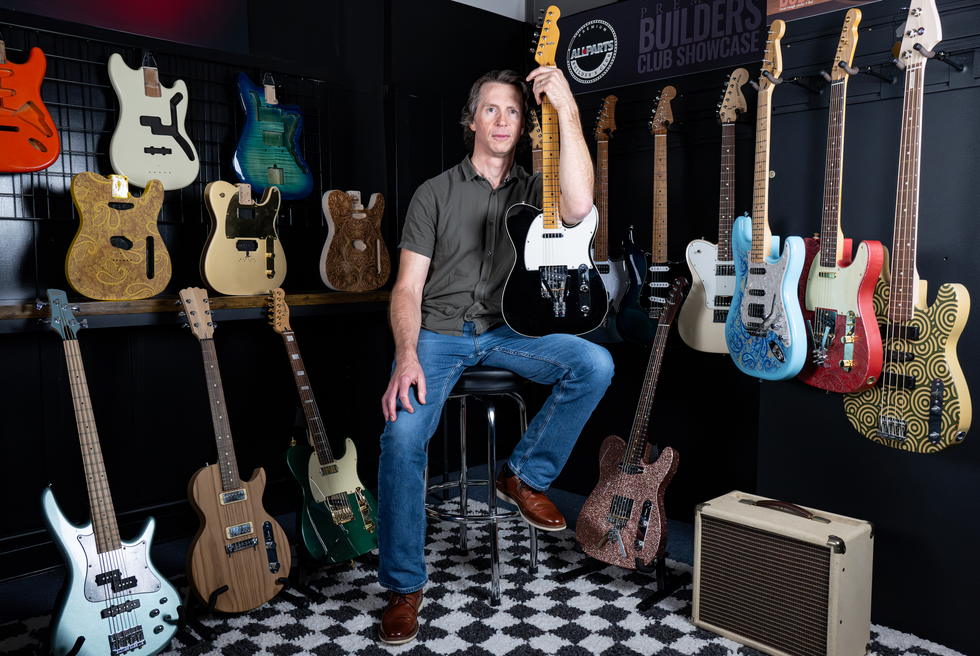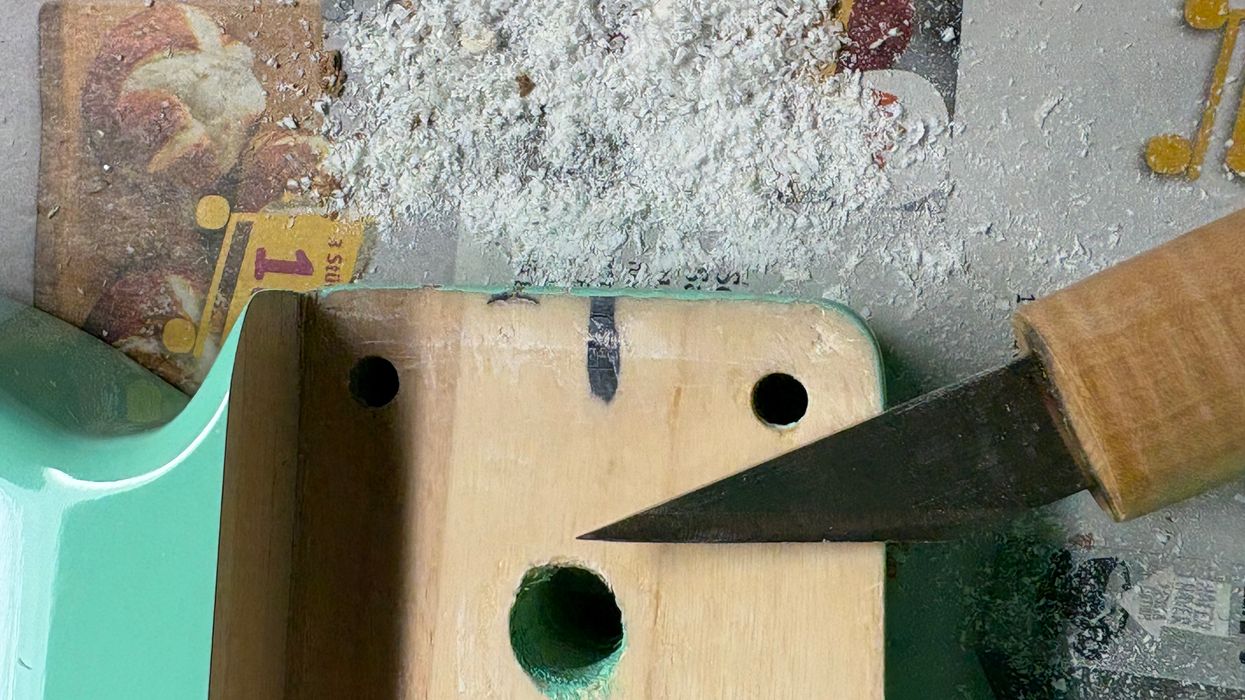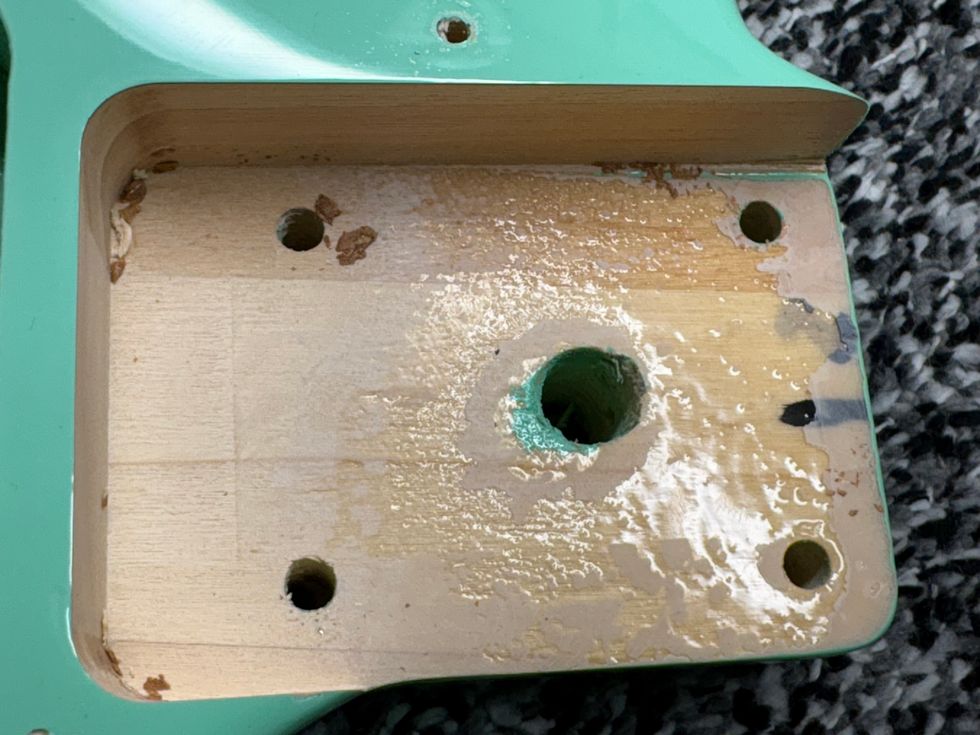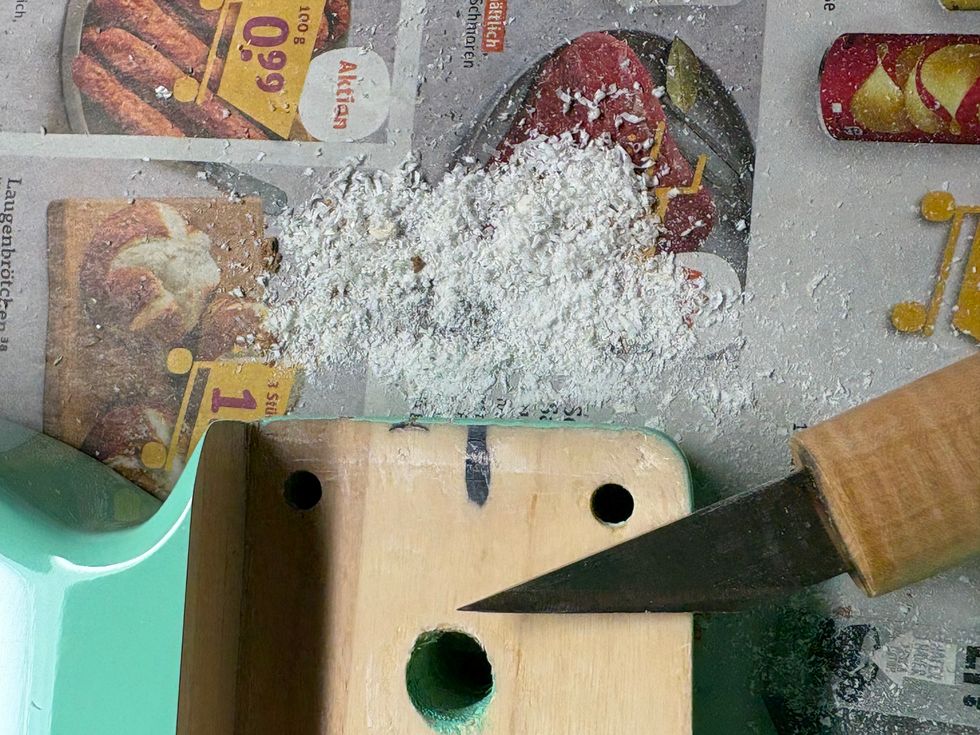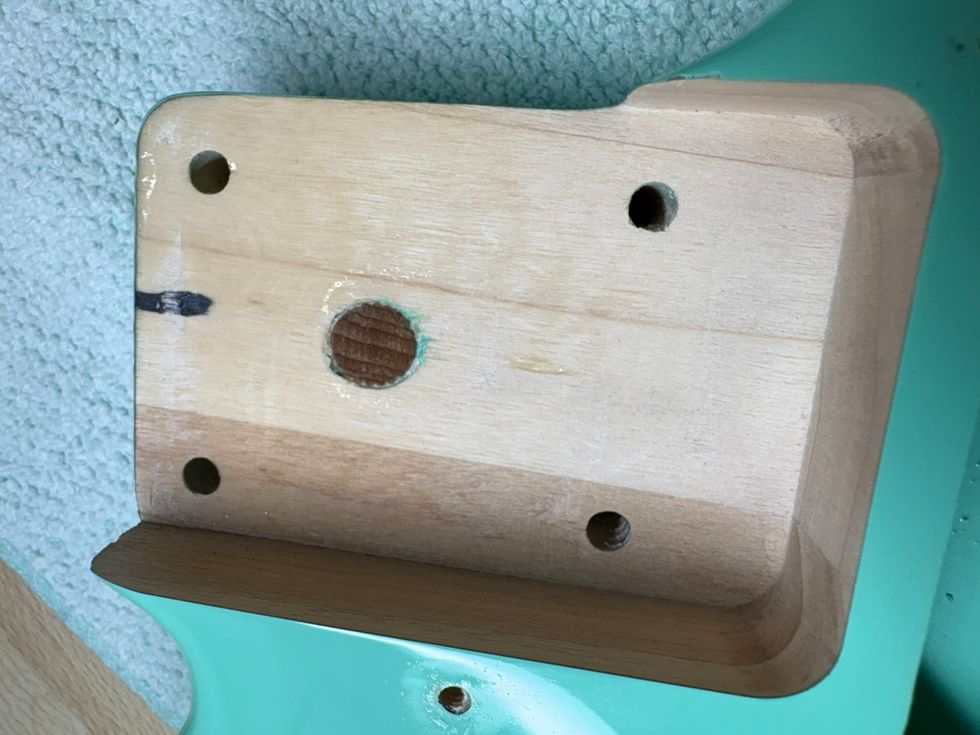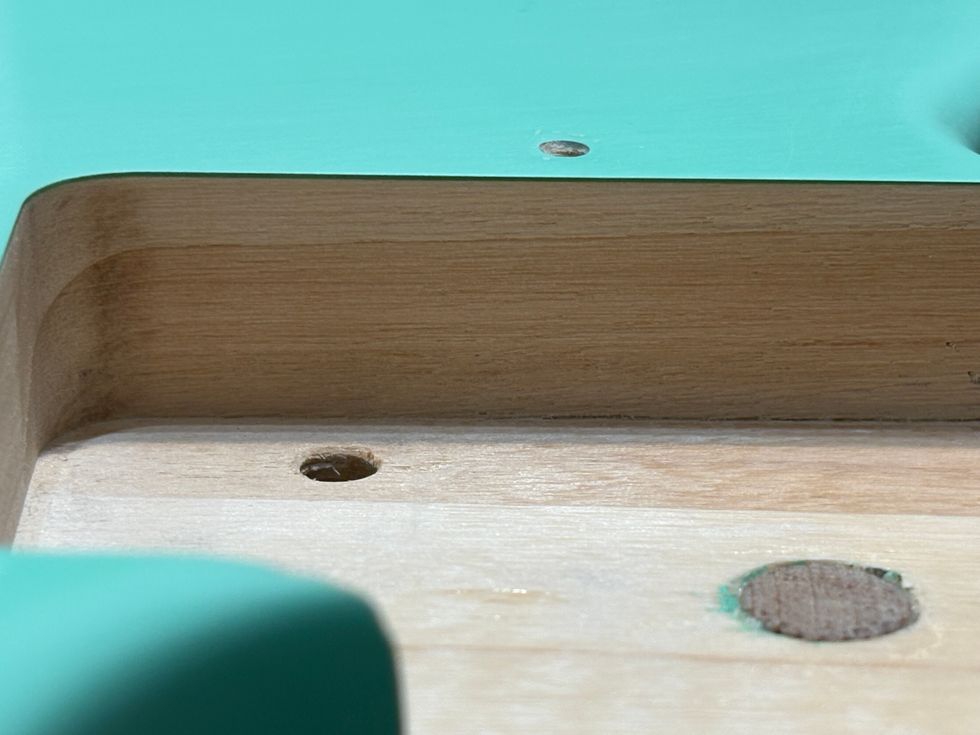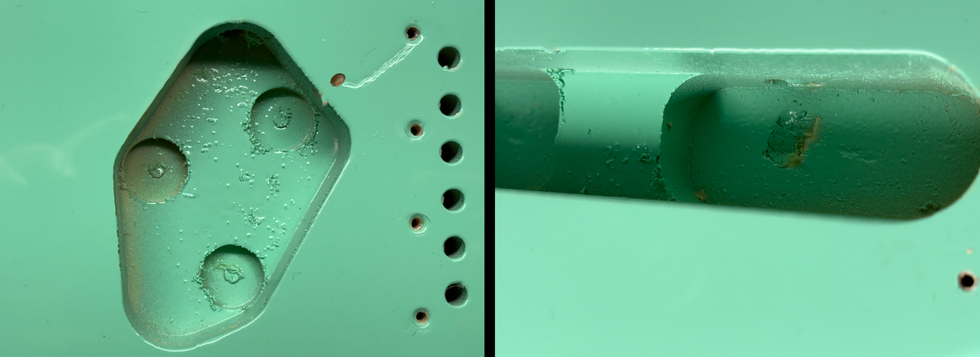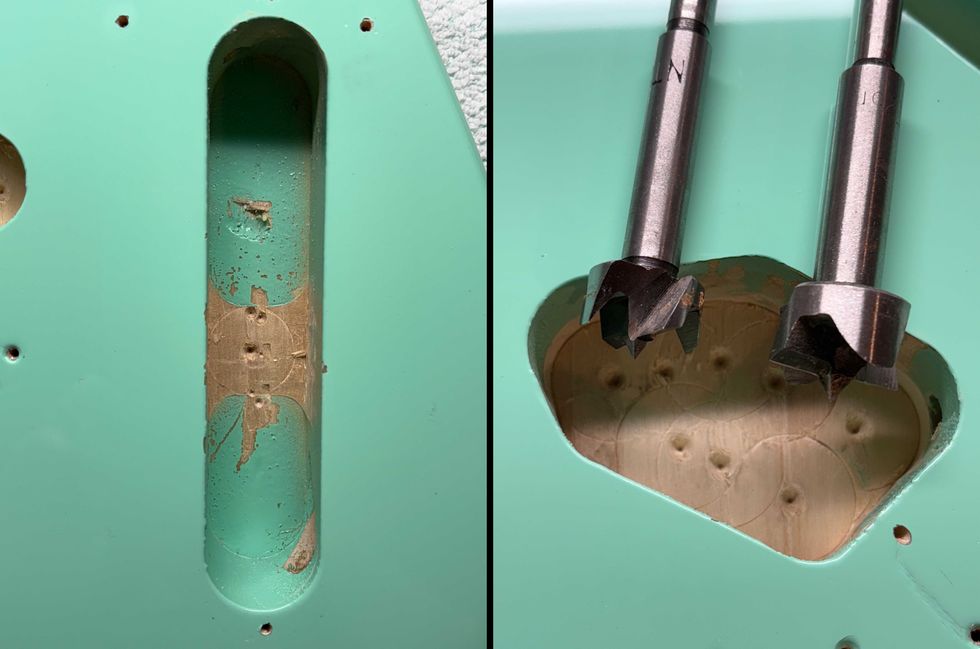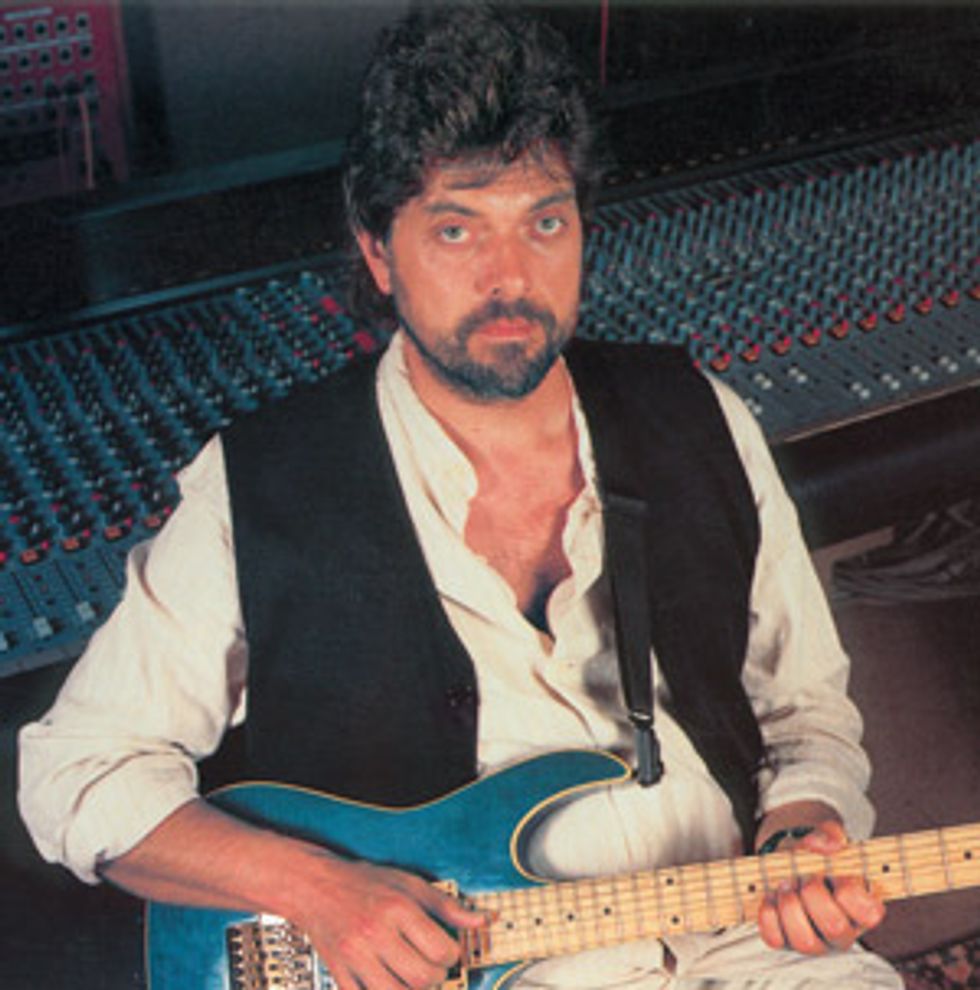
Recording engineer Alan Parsons’ fi rst studio gigs included tracking albums by the Beatles and Pink Floyd.
Imagine, you’re 19 years old, and you’ve landed a job as an assistant engineer at the famous Abbey Road Studios in London. Among your first sessions? The Beatles’ last two albums, Let It Be and Abbey Road. Then, after being promoted to full engineer, you are assigned to work with a band called Pink Floyd on a project called Atom Heart Mother, followed by Dark Side of the Moon—the latter of which earns you the first of nearly a dozen Grammy nominations. Not a bad way to start out, is it?
For Alan Parsons, it was a launching pad for a stellar career engineering and producing a who’s who of recording artists, including the Hollies (“He Ain’t Heavy, He’s My Brother,” “The Air That I Breathe”), Paul McCartney (Red Rose Speedway, Wild Life), Al Stewart (Year of the Cat, Time Passages), Ambrosia (Ambrosia), and many more. But Parsons wasn’t content to stay behind the console. He also stepped out front with his Alan Parsons Project, earning hit records (including I Robot, Eye in the Sky, Stereotomy), and touring the world to soldout crowds along the way. He is an accomplished vocalist, keyboardist, saxophonist, flautist, bassist, guitarist, and songwriter.
These days, Parsons maintains a busy schedule as a producer, and performs around the world with his Project. His latest venture is educating a new generation of engineers and producers with his Art and Science of Sound Recording series of DVDs, web videos, and master classes.
Needless to say, after working with axe slingers ranging from George Harrison to David Gilmour, Alan Parsons knows a thing or two about tracking great guitar tones. Premier Guitar recently sat down with Parsons to discuss his guitar-recording secrets, as well as how he captured the seminal sounds on Dark Side of the Moon.
You’ve captured some of the most
iconic guitar sounds of all time—David
Gilmour’s “Money” tones being one
example. Mics are obviously crucial to
that. In the past, you’ve said you always
use condenser mics on guitar amps, never
dynamic mics. Why?
Dynamic mics tend to accentuate what I
would call “hard” top-end frequencies, like
3 or 4 kHz—and that’s just the area you
generally don’t want to accentuate on an
electric guitar. I’ve always had better luck,
in terms of smoothness, using condensers.
Do you tend to use large- or small-diaphragm
condensers?
I’m comfortable with either, actually.
Historically, I’ve used large-diaphragms
most of the time, usually a Neumann
U 87 or U 86. Somehow, I’ve always
favored Neumann over AKG condensers.
I favor AKG for dynamic mics, but I favor
Neumann for condensers. People often
ask me if I’ve noticed how many new mics
there are out there lately—new condenser
mics, new ribbon mics. I have, but I still
come back to the old faithfuls. I’ve not been
excited by a new mic in a very long time.
Parsons’ recording advice for guitarists: “Never be frightened to add bottom end.” Electric guitar can sound hard and thin, he says, but accentuating the
bass frequencies can help smooth it out.
You’ve also said you avoid close mic placement
on guitar amps. Is that still true?
That’s absolutely true, because if you mic a
speaker of an amplifier in a certain location,
you’re just hearing that part of the speaker,
you’re not hearing the whole speaker. So I’d
say, generally speaking, you’re not getting
the full picture. I think there’s this separation
paranoia that people have with guitars.
They go, “If I don’t stick the mic right on
the cabinet, I’m going to pick up drums.”
The simple truth is that you won’t. It will
be fine—because the guitar is adequately
loud, and anything else is adequately quiet.
It’s not going to be a problem. Even on a
live take, you can go as much as a foot away
without problem. Live sound engineers just
don’t seem to get it.
Is about a foot away from the cabinet
where you start?
Live, I probably start eight to nine inches
away. In the studio, I might even start a
foot and a half, 18 inches away. And I
might go as much as five or six feet away,
depending on how loud it is and whether
it’s a big cabinet with four speakers in it.
You have to start at least 18 inches away to
pick up all four speakers equally.
Because you’re trying to capture the
sound of the entire cabinet.
Yeah, I think if you’re a guitar player, you
hear the whole cabinet—you don’t just hear
one speaker. I’m not saying that’s a rule or
that you might not get a very good result
just mic’ing one speaker. I’m just saying, as
a general procedure, I would want to make
sure that the entire rig is being heard, not
just one element of it.
You’ve also said you don’t use ambient
mics with guitar cabinets. Is that because
you’re pulling the single mic farther away?
That’s a slightly unfair generalization. I
have used ambient mics. I think, especially
if you’re recording guitar with a band, as I
often do, an ambient mic is just going to
reduce your separation. I think outboard
processing of room sounds is usually as
good and more versatile than using ambient
mics. If you want a guitar to sound
like it is in a room, then put a room plugin
on it, y’know? It will sound good, and
you can control how far away that virtual
mic is, or control all kinds of stuff. But it
is a generalization that I don’t use ambient
mics. I just think you get more versatility
by not using them.
Would that hold true if you were overdubbing
a guitar by itself?
Overdubbing is different. It all depends
on the style of music, as well. If the music
calls for an ambient sound, then I put an
ambient mic up. If it doesn’t and you want
the sound in your face, then I wouldn’t. I
think every case is different.
While we’re on the subject, do you recall
what mics were used on the Beatles sessions
you worked on?
I remember on Let It Be, Glyn Johns used
a [Neumann] U 67 on George’s cabinet. I
think Geoff Emerick favored the AKG D19
[on Abbey Road].
What about with Gilmour on Dark Side
of the Moon?
Probably a [Neumann] U 87, possibly a U
86. I’ve carried that through right to the
present day.
Did you use both of those together or
did you use them separately?
Just one or the other. By the time we
got around to overdubs, probably the
only mic I actually had set up would
be a [Neumann] U 47 so that we could
do vocals. I might have stuck that on
it, on occasion.
Tracking Floyd’s Dark Side was difficult for Parsons (center) for many reasons, including the fact that they had five or six tape machines set for different delays.
Just because it was convenient?
Yeah. The 47 is a great mic, and it will
record vocals and guitar admirably. I
would not see any reason to dig out an 87
or an 86 for the task. But, you know, the
guitars were recorded over the year that
it took to record that album. A lot of the
guitars were live, and we did a lot of overdubs.
I’d say that there were a number of
different setups.
Were you concerned at all with trying to
match sounds as you progressed through
that year of sessions?
There wasn’t a requirement to do that. I
mean, the sounds between the songs were
so diverse and the styles of the songs were
so diverse, there was no real need to have
any continuity.
Did Gilmour play in the control room
or out in the studio?
It was the first time I’d ever done it
where David was in the control room
with his amp in the studio. I’d never
done that before.
His amp head was in the control room
and the speaker was out in the studio?
No, his whole rig was out in the studio.
So you ran a long guitar cable out to
the amp.
Yes, we ran a long guitar cable, which I
later found out was probably not a good
idea [laughs]. You can lose a lot in a long
guitar cable.
But it worked out okay …
Yeah, it seemed all right [laughs]. The first
thing to go would be top end. We would
have been getting a somewhat mellower
sound through a long guitar cable than we
might have with a shorter cable.
The studio at Abbey Road is a big room.
Most of the guitars were in the number 3
studio, which is actually the smallest—but
it is a big room, yeah. A good-sized room.
How much time did you spend finding
the right place for the microphones on
the amps?
Generally, I’d put a mic out and I might
move it once, but not beyond that. I would
usually get it to a place where I felt it
worked—in theory—and then if it didn’t
work, I’d move it. But I saw no reason to
move it if it was working.
Were you following your “18 inches away
with a 4x12 cabinet” philosophy back then?
Yeah, I would guess so.
Some sources say Gilmour tracked some
of that album with a Fender Twin. Was
that mic’d the same way?
I have no memory of that. All I remember
is a 4x12 Hiwatt cabinet and whatever
speakers were in there. Oh yeah, and a
Leslie. On “Breathe,” for example.
How did you mic that?
Most likely it was fairly distant. Probably
one mic on the top, one mic on the bottom.
Because we were on 16-track, as opposed
to 24-track, I was probably not recording
the Leslie in stereo—because of not having
enough tracks. It would have all been recorded
mono anyway, so it was getting a good
spectral response out of the Leslie, rather
than any kind of stereo out of it.
Parsons stands with an array of speaker monitors—two sets of nearfields and wall-mounted mains—that help him optimize mixing adjustments.
Are the sounds that you were capturing
pretty much what we hear on the final
mix, or was there a lot of processing done
at mixdown?
Yes, David tracked with his effects. He had
a pretty advanced pedalboard for the period.
I mean, I don’t know if it was actually
a “pedalboard,” but he had pedals. He had
phasing pedals and wah-wah pedals and all
kinds of things. And there was also a thing
made by EMS called the HiFli, which was
a sort of console device that had an early
form of chorusing on it and some other
effects. It was an interesting box.
You’ve said in the past that you’re not a
big fan of compression, except for managing
out-of-control dynamics. Did you
use much compression on the Dark Side
of the Moon mixdown?
What generally tended to happen was
either no compression or compression on
everything except the drums, because I
totally hate—with a vengeance—compressing
drums. So, although [producer] Chris
Thomas wanted to compress everything, I
talked him into compressing just the instruments
and vocals, but not the drums.
You created some pretty cool sounds with
very little studio gear on Dark Side—
basically, an EMI console, a 16-track tape
machine, Fairchild limiters, and an EMT
plate reverb.
Every sort of time-based process was done
with tape—there were no digital boxes
then. We might have had as many as five
or six tape machines doing various delays,
reverb delays, and so on. I distinctly
remember on the mix having to borrow
tape machines from other rooms to get
delays and stuff.
There were a lot of tape loops, too.
Did you do a lot of actual tape editing
in addition?
Oh, plenty. The 16-track was an edited
tape. You’d think that all the connecting of
the songs was done at the mix stage, but it
wasn’t. It was all there on the master tracks.
There was a break between side one and
side two, just as there was on the vinyl, but
you could play the whole multitrack as a
continuous piece, so everything was there.
You actually did the edits right on the
master recording, the master multitrack?
Yeah. That was a challenge for getting tracks
well played, getting the right instruments in
the right places and not having any problems
at the crossovers [tape splice points].
To do a new take, you had to erase the
old take. So the new one always had to
be better—because you couldn’t click
undo like we do digitally today, and you
didn’t have a bunch of tracks to spare
like we have now with digital audio
workstations (DAWs).
Well, we ended up second generation in order
to make more tracks available. [Ed. Note:
“Second generation” refers to a bounce or submix
from one multitrack tape machine to a second
multitrack tape machine to free up tracks for
additional overdubs.] There were even some
songs, I can’t remember which ones specifically,
where the bass and all drums were reduced
to two tracks on the second-generation tape.
It must’ve been a pretty big challenge to
balance the drums and bass and still have
them sound good when everything else
was laid on top later.
That was definitely a challenge [laughs].
It was, “Oh my God, I hope I’ve got this
right—because I can’t go back!”
Sometimes having limited options is
better than having too many options.
Looking back, do you think those limitations
were somehow an advantage?
Oh, I agree with that totally. There are far
too many decisions that can be made later
now. I’m all for committing at the earliest
possible moment.
Parsons’ advice for going into the studio is to “do the processing at the front end,” focusing on the playing and composition of the music rather
than the equipment.
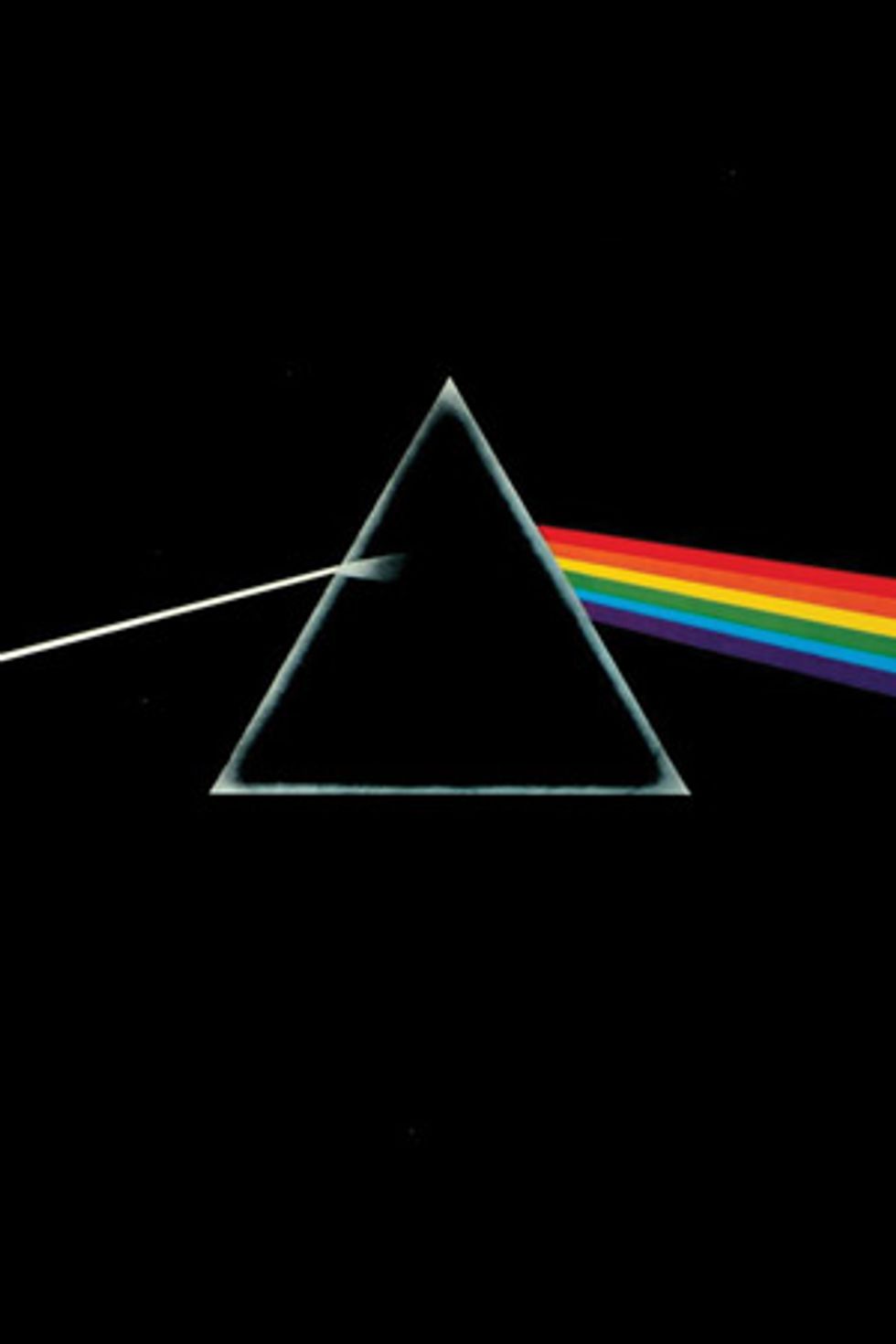
About Dark Side
Pink Floyd had already released
seven albums and was a major success
by the time their magnum opus,
Dark Side of the Moon, debuted in
early 1973. They’d begun working
on the new songs in 1971, and the
suite—which was originally known as
Dark Side of the Moon: A Piece for
Assorted Lunatics—was performed
live for the press in early ’72. Floyd
entered the studio in May of that year,
with Alan Parsons manning the console
and Chris Thomas (Roxy Music,
Badfinger, Sex Pistols, Pretenders)
producing. They spent nearly a year
recording what would become one of
the biggest albums of all time.
Dark Side was an immediate hit upon its release in March 1973. It shot to the top of the charts within a week, and remained on them for an amazing 741 weeks. It is one of the best-selling albums of all time (50 million copies and counting), surpassed only by Michael Jackson’s Thriller. It has been remastered and rereleased several times, most recently as part of the exhaustive Why Pink Floyd…? set released in September 2011.
It’s been almost 40 years since Dark Side
came out, but it’s still regarded by many
as an audiophile master recording. What
do you attribute that to?
I don’t take all the credit. I mean, the band
members were experienced in the studio.
They arguably were the most technically
minded band out there. They knew what
a recording studio was capable of, and they
took full advantage. And they worked me
hard—they always worked their engineers
hard to push the barriers. There’s no better
band for an engineer to cut his teeth on,
frankly [laughs].
What’s your advice for musicians wanting
to capture that quality of sounds in a
home studio or a project studio?
Just get the band playing. Use good mics and
good mic preamps and so on, and then leave it
alone. Do the processing at the front end—in
the playing and in the composition. For the Art
and Science of Sound Recording, we did a master
class at the Village Studios and we got the top
guys: Nathan East [Eric Clapton, Four Play,
Stevie Wonder, Herbie Hancock] on bass, Rami
Jaffee [Wallflowers, Foo Fighters] on keyboards,
Vinnie Coliauta [Sting, Allan Holdsworth,
Frank Zappa, Jeff Beck] on drums, and Michael
Thompson [master L.A. session guitarist] on
guitar. We laid down a track, and it sounded
great with no plug-ins, no special sound processing.
Everybody was just making their own
good sounds. Nathan had his own little pedal
box and Michael had a rack full of gear, so they
made it sound good at the source and then
we just committed it to disk—and it sounded
great. There’s another general attitude that the
more time you spend experimenting and turning
sounds inside out, the better it will get. But
it’s often the reverse that is true.
Any tips for guitarists recording at home?
The technology has evolved. You’ve got all
these Line 6 Pods and SansAmp devices
to get nice distortion out of. But you
know, there’s no substitute for a great lead
sound—like a vintage Les Paul through a
Marshall amplifier. I still think that’s a great
guitar sound—and hard to get any other
way. So much of it is in the playing, as well.
I’m not an electric guitar player—I’ve got a
rig here at home, and when I play it sounds
like utter crap—but when I get a guitarist
in here, he makes it absolutely sing [laughs].
So that makes a huge difference. The standard
of musicianship, quite apart from the
other stuff, is such a huge contribution to
the way a guitar sounds.
Any final thoughts you’d like to add?
I’d just like to add one thing: Never be
frightened to add bottom end if you’re a
guitarist. I often do that. Electric guitars can
sound hard and thin, and rather than try
and remove that hardness, I add some bottom
end on the console to smooth it out.
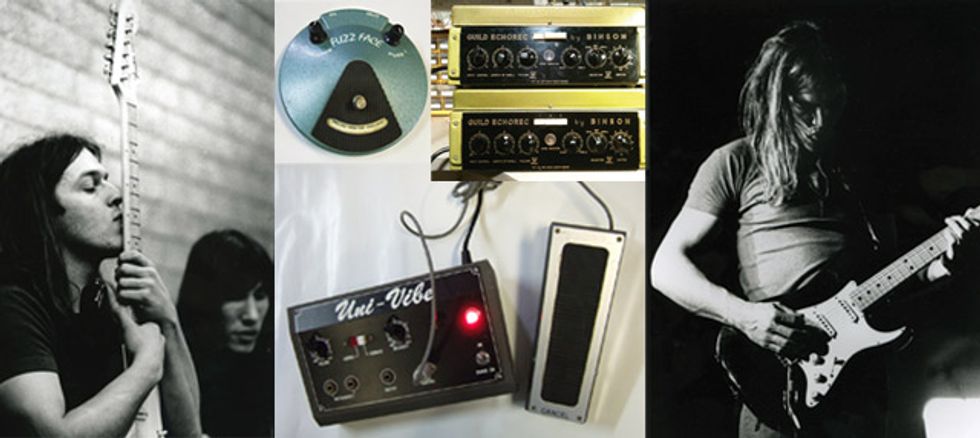
Gilmour's Gear
Guitarist David Gilmour used a
small arsenal of gear for the Dark
Side of the Moon sessions. Given
his penchant for changing his
rig—and the fact that the sessions
were scheduled around live gigs
and stretched over the course of
a year—it’s difficult to pin down
an exhaustive list of his Dark Side
setup. However, the following pieces
of gear are generally believed to
be the main tools for the sessions.
Guitars
Gilmour’s famous black Fender Strat was his main axe during the Dark Side of the Moon
sessions. At the time of the recording, the oft-modified 1969 Fender Strat would have had
a ’63 neck with a rosewood fingerboard, stock single-coils, and an extra mini switch for
extra pickup combinations. In early ’73, a Gibson PAF humbucker was installed between
the bridge and middle pickups, but it is doubtful that pickup is heard on the album.
Gilmour also played a Fender 1000 pedal-steel guitar tuned in G6 (D–G–D–G–B–E, low to high). He also used a custom guitar built in 1970 by Canadian luthier Bill Lewis for parts of the “Money” solo. It had a mahogany body, ebony fretboard, 24 frets, and custom humbuckers, and it may have been used for other tracks, as well.
Amps
During the Dark Side period, Gilmour used Hiwatt DR103 100-watt heads through 4x12
cabinets. Alan Parsons recalls the cabinets being Hiwatts, while some sources (such as
Gilmourish.com) suggest they may have been WEM cabs. The latter source also suggests
that a Fender Twin combo was used on Dark Side, though Parsons does not recall that amp
being used. A rotary-speaker cabinet—either a Leslie or a Maestro Rover—was also used.
Effects
Gilmour is famous for his masterful use of effects,
both live and in the studio. Among those used
for Dark Side were a Dallas Arbiter Fuzz Face, a
Binson Echorec II, a Colorsound Power Boost, a
Univox Uni-Vibe, a Kepex tremolo, and an EMS
Synthi HiFli.
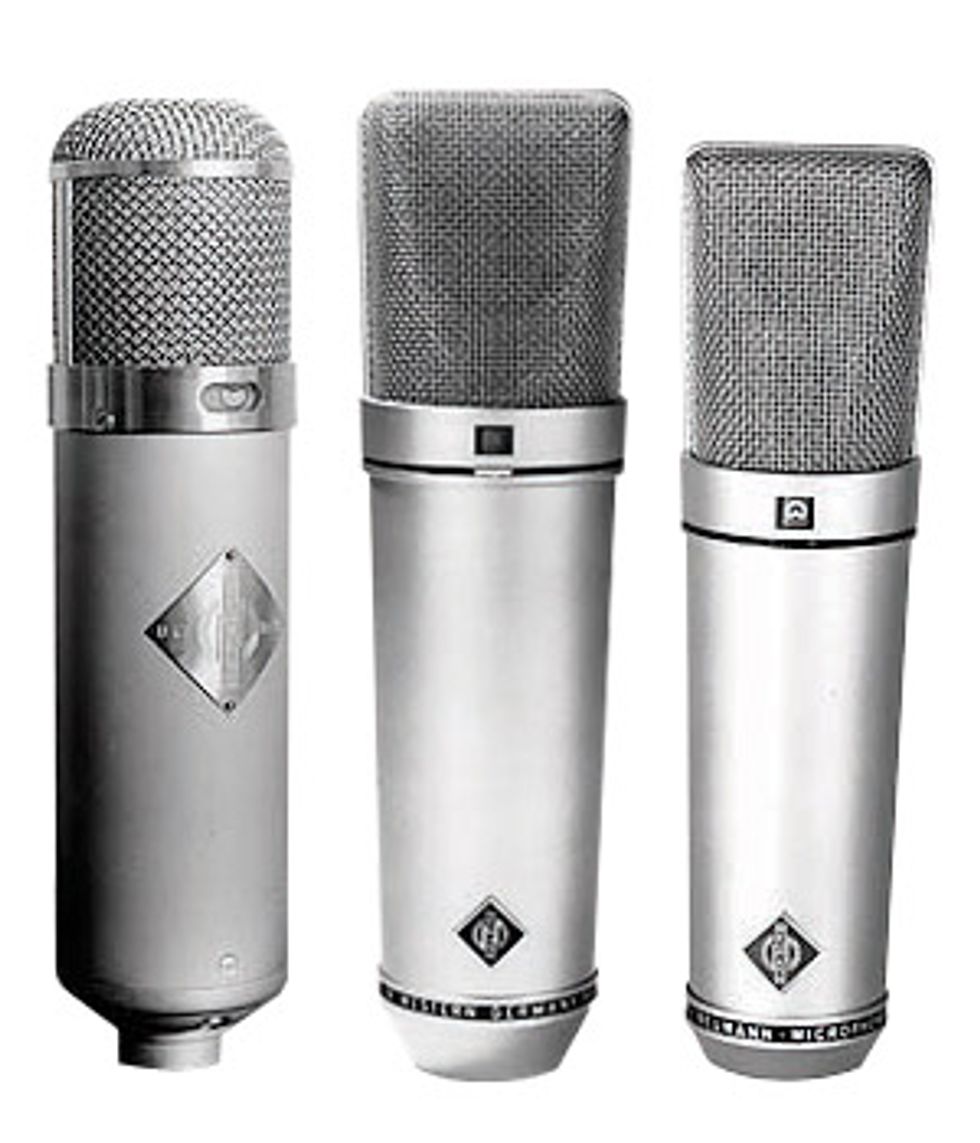
Parsons' Go-To Mics
The Neumann U47, U 67, and U 87 microphones mentioned by Alan Parsons in this
interview have probably been used to record more hit records in more styles of music
than just about any other microphone models. They’re quite expensive—especially
vintage U 47s and U 67s—as are newer reproductions like those from Telefunken and
Bock Audio. However, below we’ve also listed some quality alternatives that will impart
much of their magic at a pretty reasonable price.
Neumann U 47
Manufactured from 1949 to 1965, the U 47 was a large-diaphragm
tube condenser microphone with a switchable polar pattern.
It is outstandingly versatile and excels on almost all sources,
including vocals and guitars. It has a clean sound with good presence
and nice top-end warmth. The Beatles’ producer, George
Martin, has stated that the U 47 is his favorite microphone.
In 1969, the U 47 FET—a very different microphone with solid-state electronics—was released. Many engineers prefer the FET version for recording kick drums and upright bass.
Neumann U 67
In the early ’60s, the U 67 was introduced to address some
complaints about the U 47—some engineers felt the U 47 could
be harsh and bass-heavy when used for close-up vocal recording,
which was becoming popular at the time. The U 67 is still
a large-diaphragm tube condenser, but it adds a bass roll-off
switch and has a slightly reduced upper midrange. It is also very
versatile, with a large diaphragm, switchable polar patterns, and
a tube-based condenser design. The U 67 became the studiostandard
workhorse for many engineers and producers.
Neumann U 87
The Neumann U 87 is among the most widely used mics in the
professional studio market. It’s a solid-state condenser with a
large diaphragm and switchable polar patterns. Many engineers
rely on it for vocals, but it has been used for almost all applications,
including orchestra, drums (Bruce Swedien of Count
Basie, Duke Ellington, and Michael Jackson fame swears by it
for toms), electric guitar, and more.
Large-diaphragm tube condenser alternatives: Mojave Audio MA-200 ($1,095 street), Rode K2 ($699 street), SE Electronics Z5600a ($849 street), Avantone Audio CV-12 ($499 street), or Studio Projects T3 ($599 street)
Large-diaphragm solid-state condenser alternatives: Mojave Audio MA-201 FET ($695 street), Audio-Technica AT2035 ($149 street), Rode NT1000 ($329 street), Blue Bluebird ($299 street), AKG Perception 220 ($179 street)



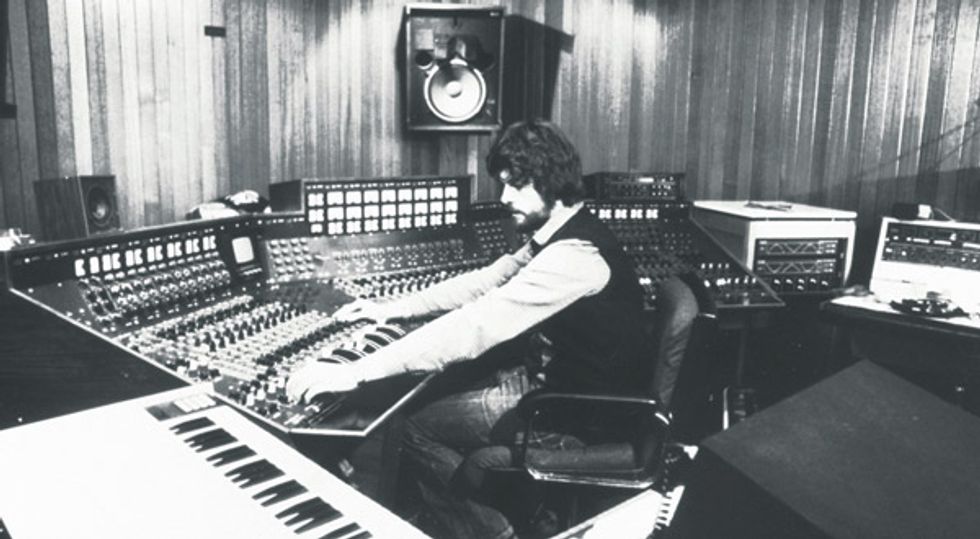
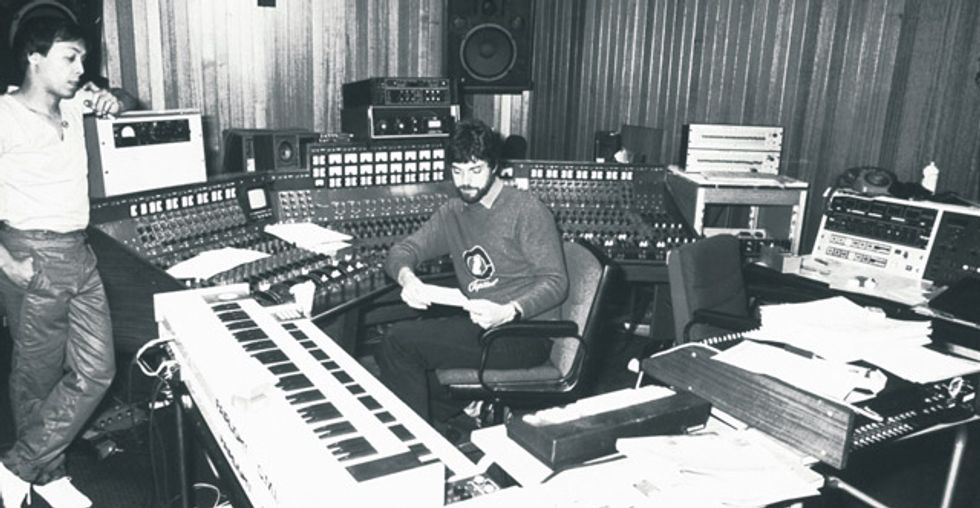
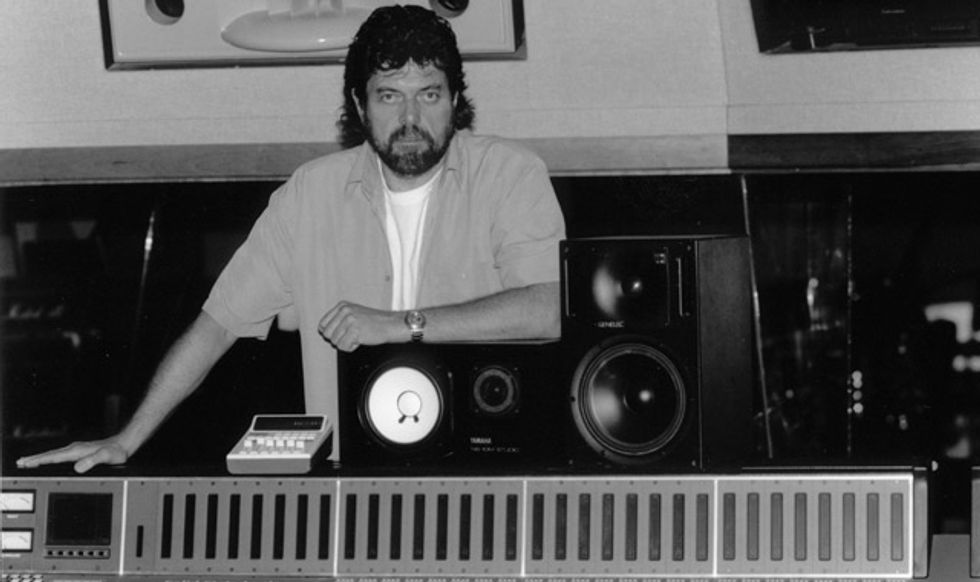
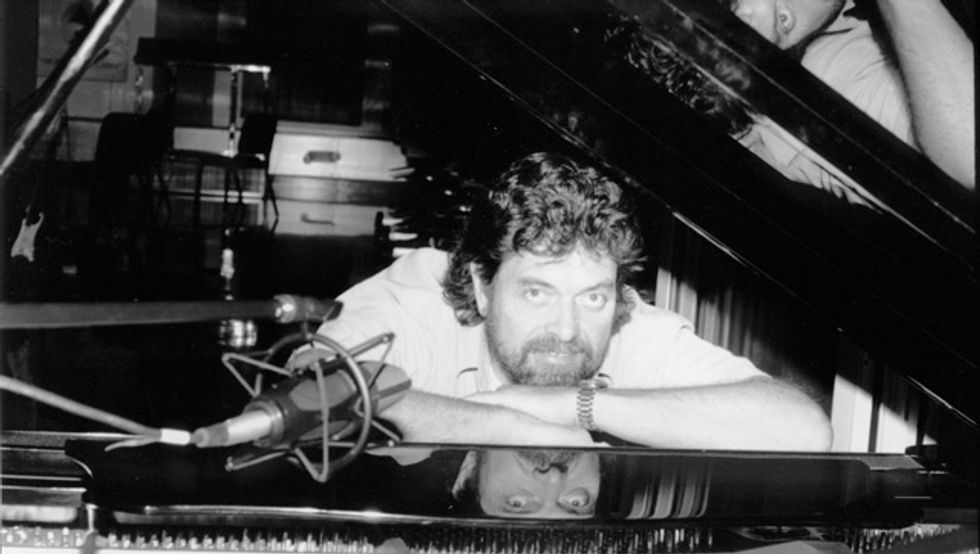
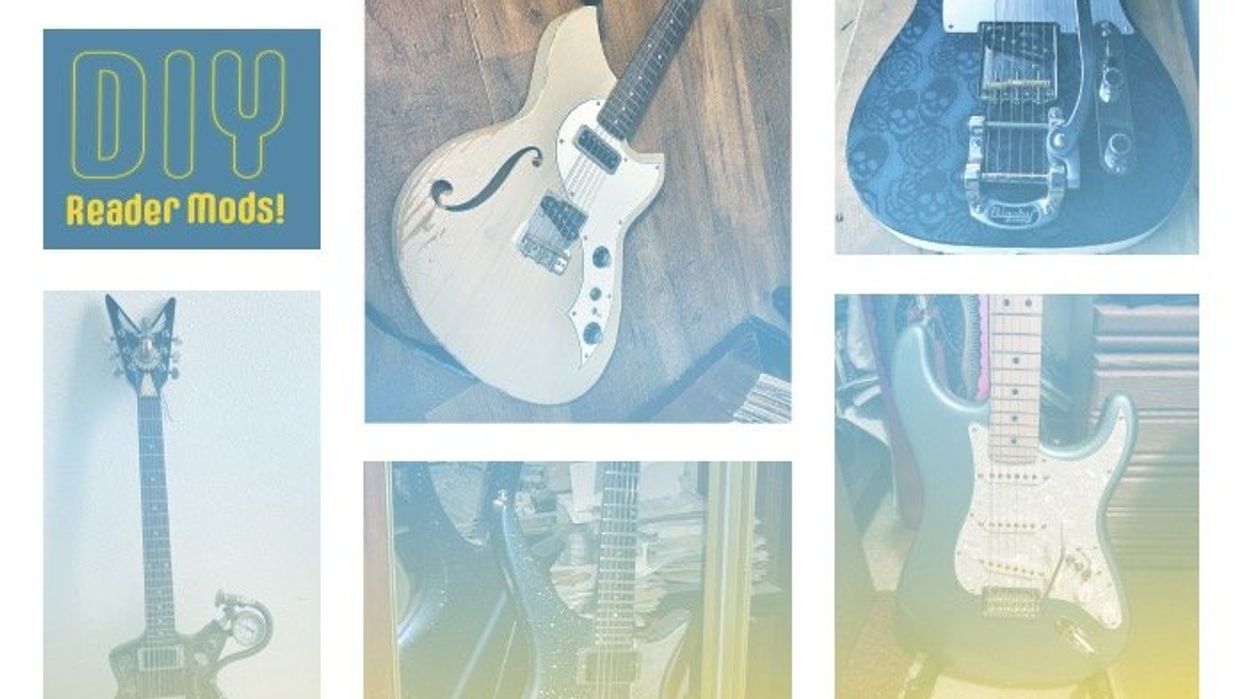
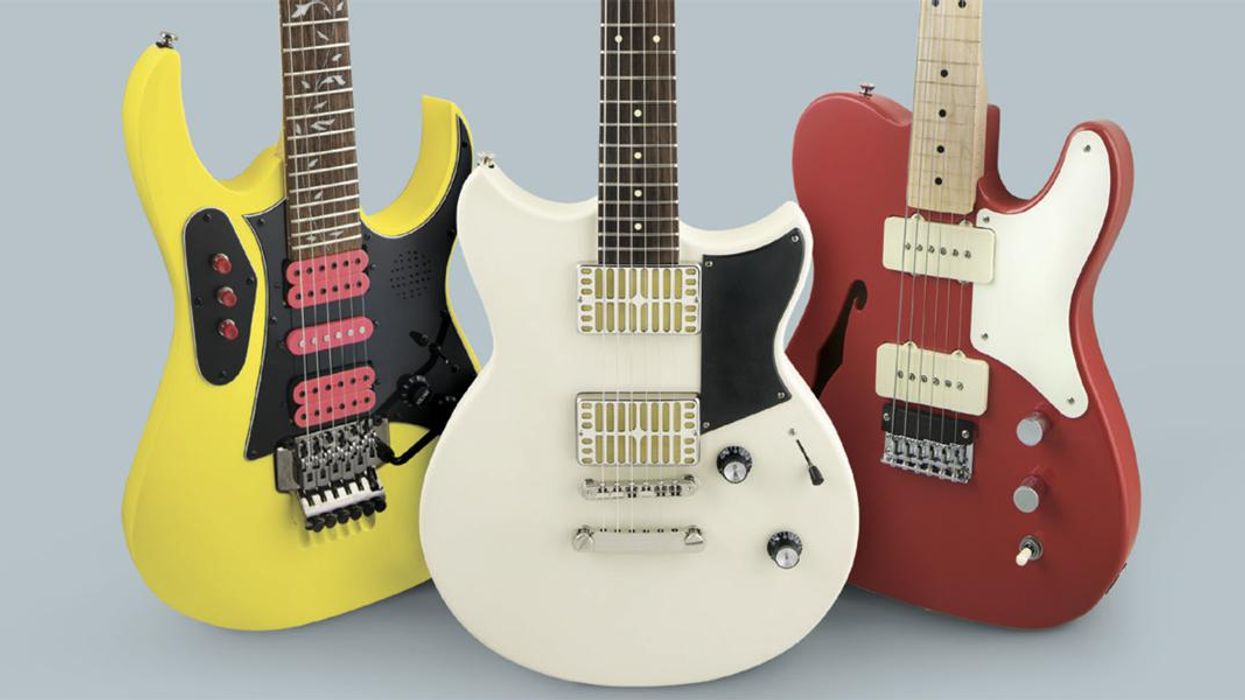
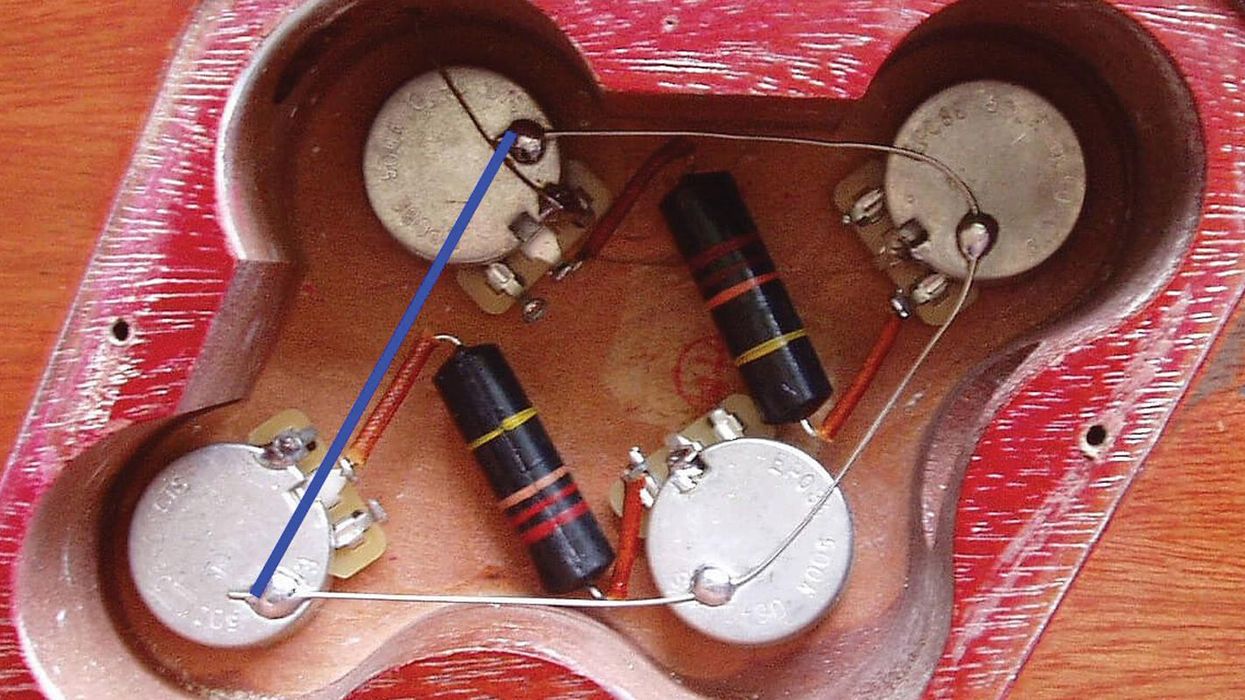
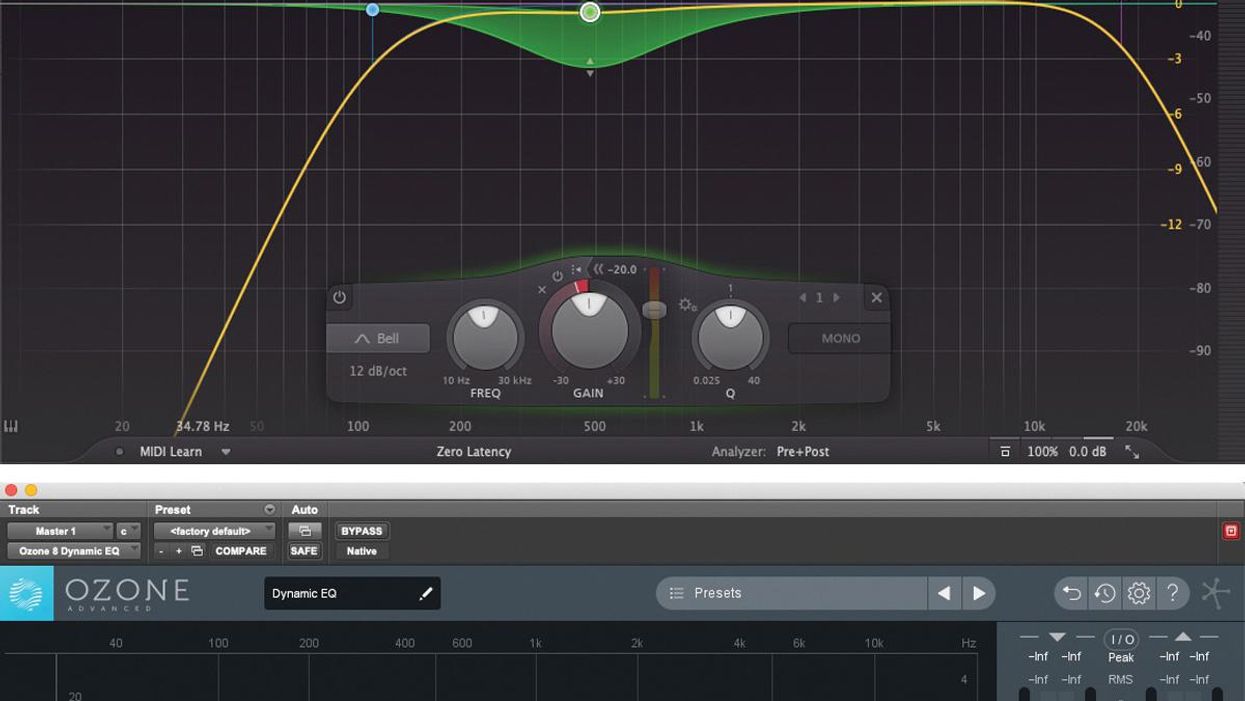

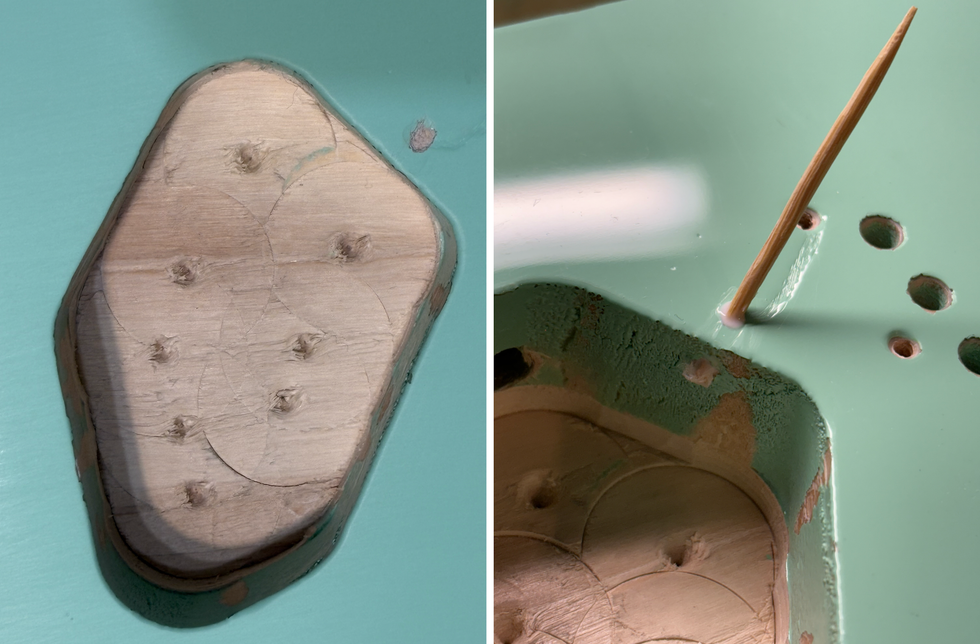

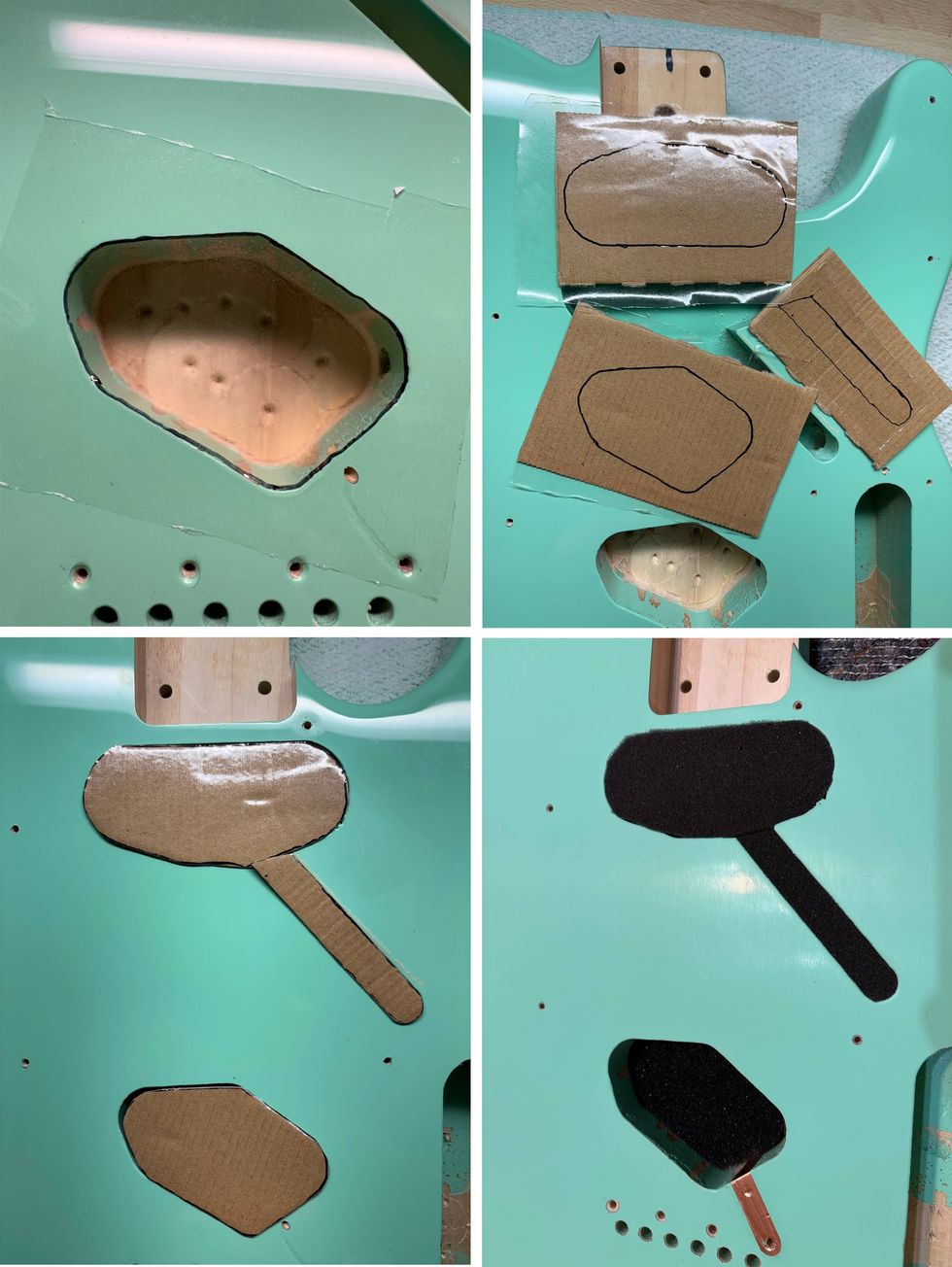
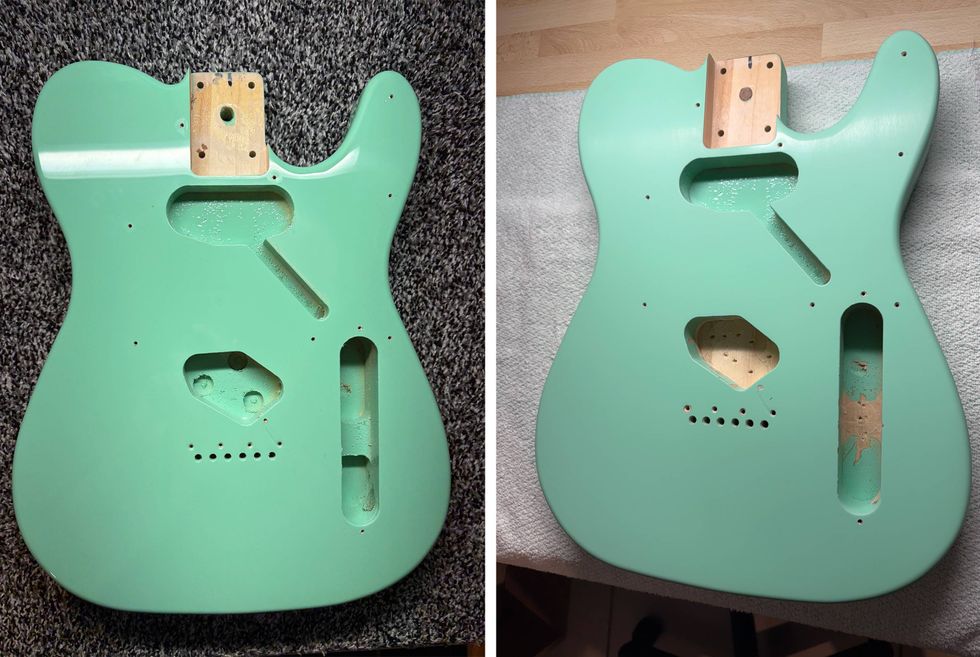






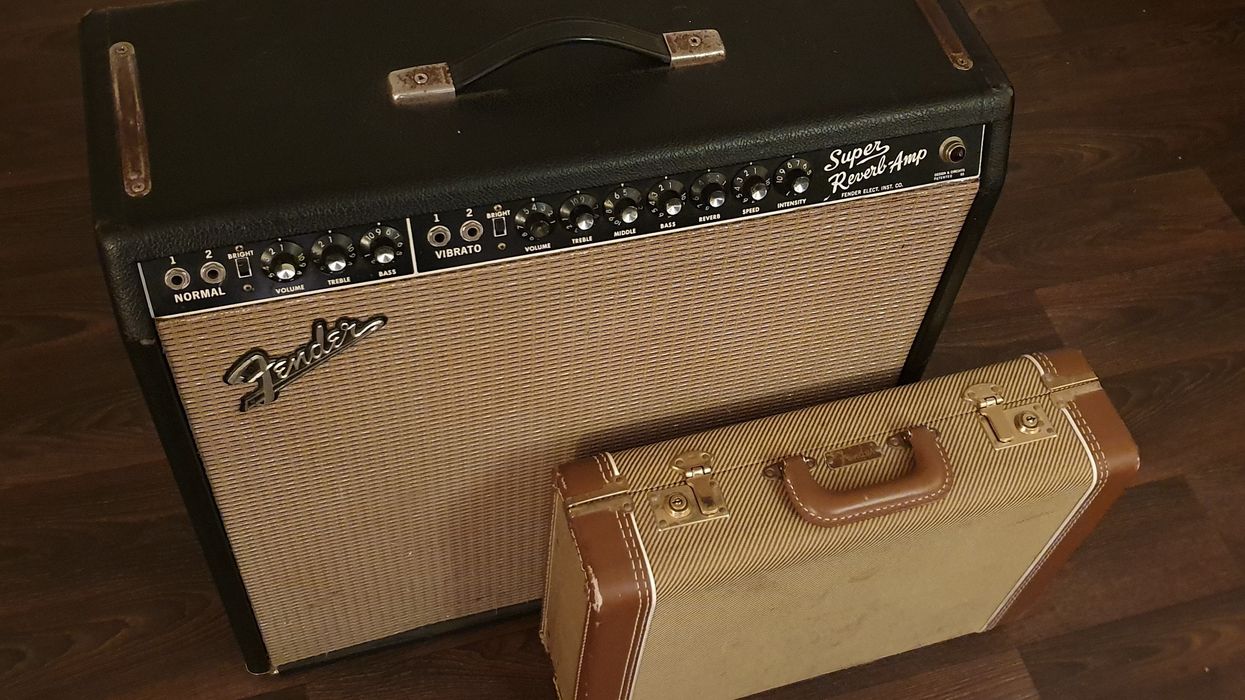
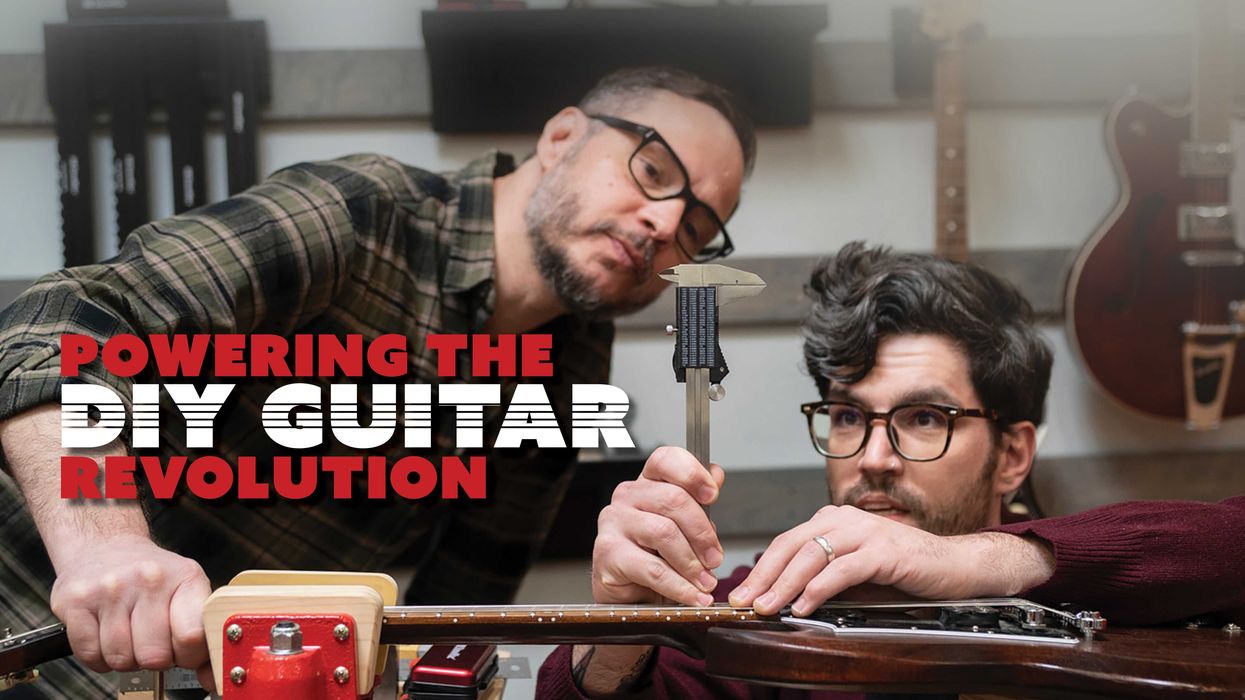
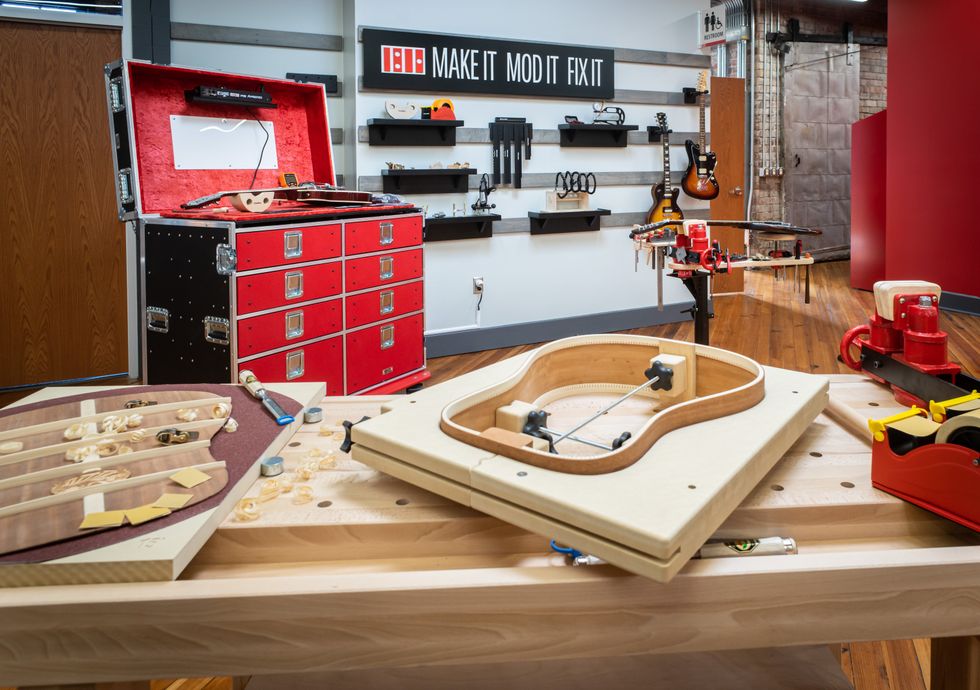
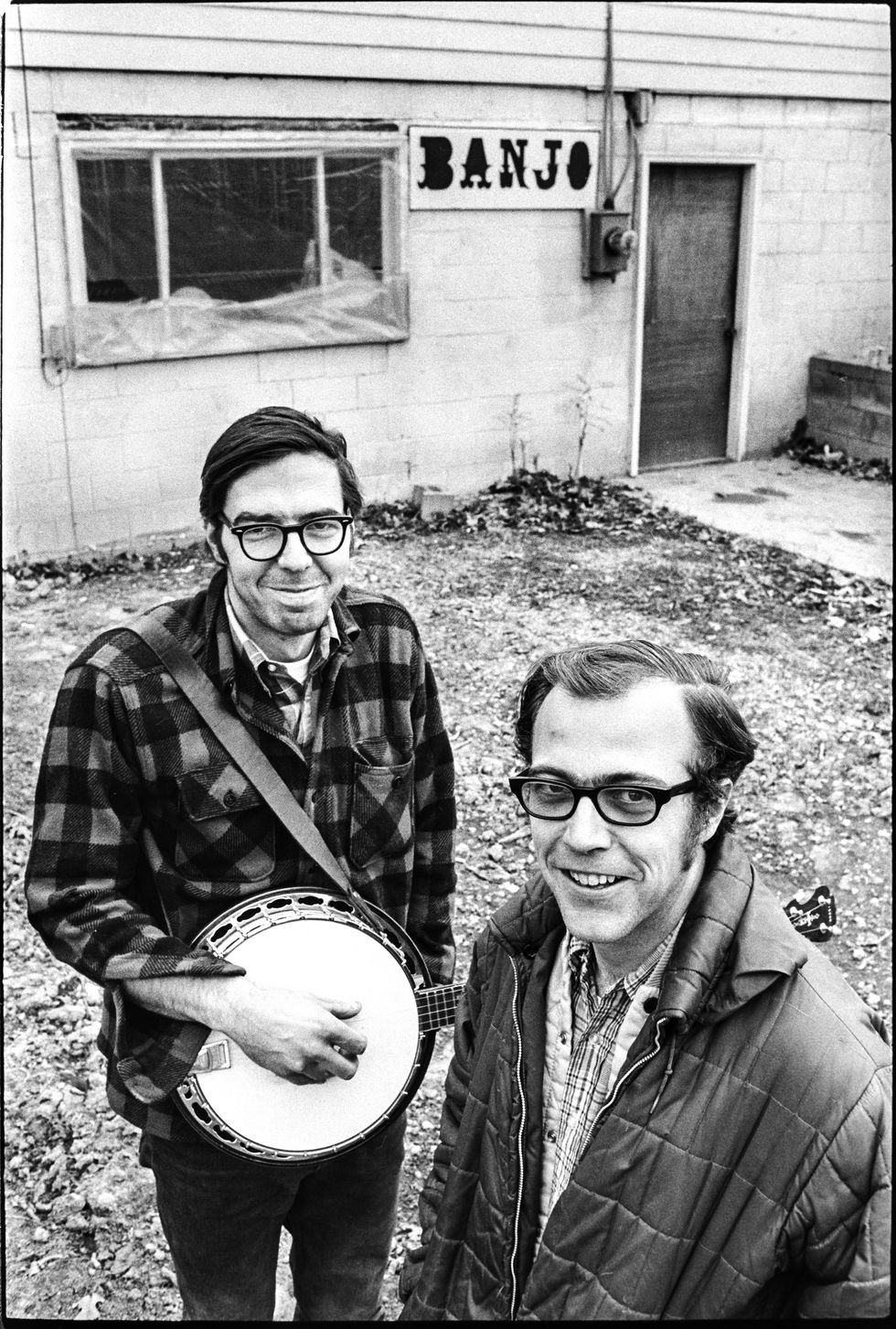
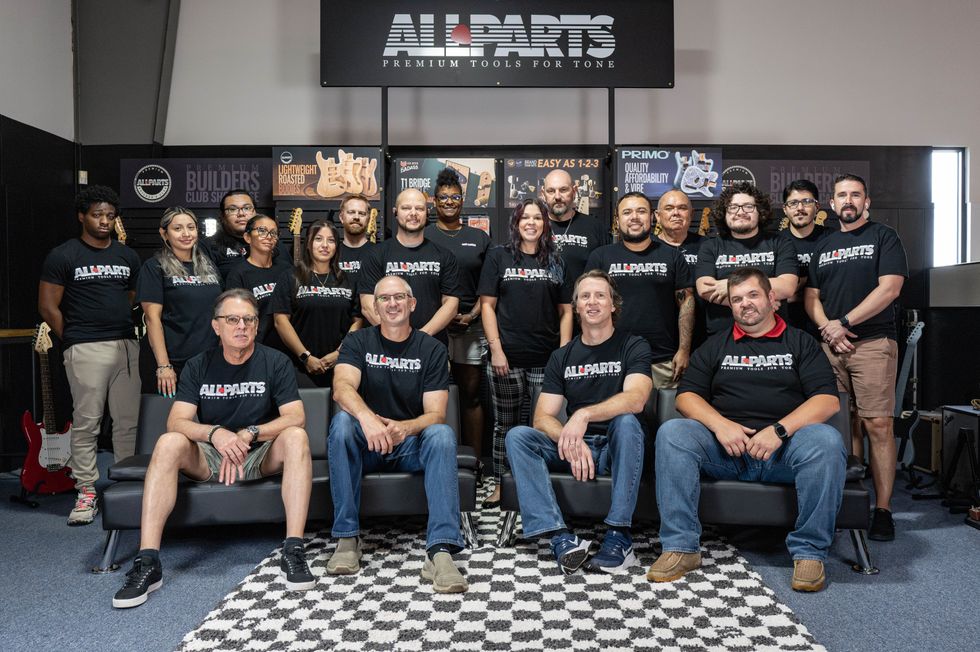 The Allparts team at their Houston warehouse, with Dean Herman in the front row, second from right.Photo by Enrique Rodriguez
The Allparts team at their Houston warehouse, with Dean Herman in the front row, second from right.Photo by Enrique Rodriguez